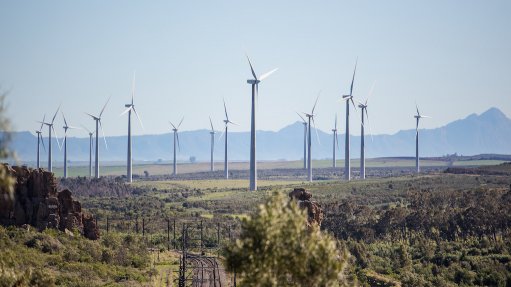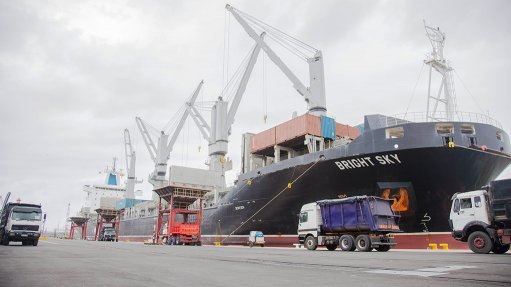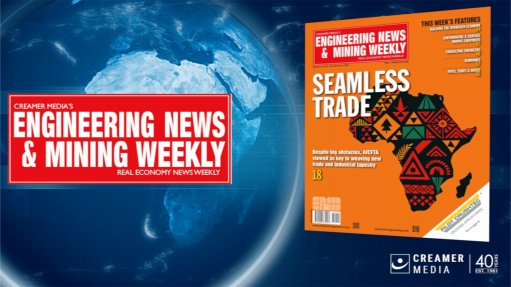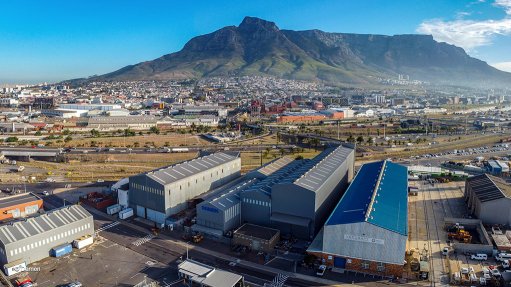Booming renewable energy market driving need for better risk management in local construction
This article has been supplied by the author and has not been written or solicited by Creamer Media. It may be available only for a limited time on this website.
By Kevin Nadasen
20 May 2024: South Africa’s renewable energy market is booming. With a growing number of projects planned and in progress, there is an increasing need for construction companies working on renewable energy projects to better manage and mitigate potential risks and losses.
This is according to Kevin Nadasen, Manager International Santam: Specialist Solutions, who says that since 2021, installed embedded solar photovoltaic energy capacity has more than tripled, from 1.5 GW in 2021 to 5.2 GW in 20231.
He says that the rapid growth in renewable energy is extremely beneficial for business and South Africa as energy generation costs are more efficient, the air is cleaner, and businesses have a more constant energy supply. There are however many liabilities associated with renewable energy projects that construction companies need to plan for and insure against to avoid losses.
Infrastructure, equipment and property losses could be devastating
“The investments in equipment, infrastructure and land are significant for renewable energy projects,” Nadasen says. The losses from damage to these, equipment failure, vandalism and theft, as well as natural disasters, would be as significant.
Renewable energy infrastructure, such as wind turbines and solar panels, are exposed to extreme weather conditions. Nadasen explains that construction sites are vulnerable to wind damage, flooding, landslides, and other weather-related hazards that can cause property damage, delays, disruptions, and cost overruns.
The location of many renewable energy projects in remote regions pose additional risks, explains Nadasen. He uses the example of the high risk of hazards associated with the use of cranes in erection of Renewable Energy infrastructures, and the risks associated with transportation of equipment and materials to remote and/or mountainous areas.
As with all construction projects, there is also the risk of business interruptions, which could increase with renewable energy projects. “Liabilities can arise from unexpected downtime due to equipment failure, maintenance issues, grid connection problems or extreme weather events and natural hazards, as well as supply chain disruptions. This can result in lost revenue and delays in the construction project.”
Nadasen says environmental impacts during construction, operation and testing and commissioning phases also pose a risk. “Liabilities related to environmental contamination, habitat disturbance and wildlife impacts may lead to cleanup costs, fines, penalties and possible legal expenses.”
Advances in technology help assess, monitor and mitigate risk
He explains that developers and investors need to conduct a thorough risk assessment to identify and evaluate these and other potential liabilities associated with the project, including contractual obligations and third-party liabilities. “Advancements in technology, such as Building Information Modeling (BIM), a 3D Model-based process, the use of drones, as well as advanced data analytics and algorithms, can enhance the accuracy and efficiency of the assessment process.”
When the risks are identified, risk management and mitigation plans need to be put in place to ensure companies don’t suffer catastrophic losses. Insurance policies, such as Construction All Risks (CAR) or Erection All Risks (EAR) insurance can be used to insure the Assets and property during the duration of the Construction/Erection project .
“CAR /EAR insurance is a type of insurance policy specially designed to provide comprehensive coverage for construction projects, including renewable energy projects,” Nadasen explains. “It typically covers a wide range of risks and hazards that may arise during the construction process, including physical damage, natural hazards, storm damage, fire damage, theft, vandalism, defective workmanship and accidental damage.”
CAR/EAR polices may also include coverage for third-party liability as well as Advance Loss of Profits or Delay in Start-up Insurance. “This provides coverage for financial losses incurred due to delays in the completion of the project caused by insured perils.”
Risk management plans can lower premiums
Nadasen says that the growing frequency and severity of weather-related disasters is driving up insurance costs for construction projects, particularly in high-risk areas prone to hurricanes, floods, wildfires, and other natural hazards. “Although insurance can cover damage and losses, mitigation plans can reduce or prevent them, and lower premiums.”
There may also be restrictions on cover and/or higher deductibles for projects located in high-risk areas, or with inadequate risk mitigation measures. However, construction projects can adapt to changing environmental conditions and incorporate climate resilience measures into design, construction and maintenance practices to reduce the risk of losses from these events.
He adds that insurers are offering risk engineering services, safety training programmes, and customised risk management solutions to help construction firms improve safety, reduce accidents, lower insurance premiums and prevent claims.
Changing landscape
Nadasen says the world is moving to a more sustainable future where insurers will need to develop specialised coverage options for sustainable construction projects, including renewable energy installations. “Insurers, construction firms, and other stakeholders may collaborate more closely in future to develop innovative risk management solutions to reduce the likelihood and severity of construction-related losses from these projects.”
The sums insured for renewal energy projects are enormous, and Nadasen says companies should engage with experienced insurance brokers and underwriters to design insurance policies that provide comprehensive coverage for the project’s specific risks and liabilities.
Comments
Press Office
Announcements
What's On
Subscribe to improve your user experience...
Option 1 (equivalent of R125 a month):
Receive a weekly copy of Creamer Media's Engineering News & Mining Weekly magazine
(print copy for those in South Africa and e-magazine for those outside of South Africa)
Receive daily email newsletters
Access to full search results
Access archive of magazine back copies
Access to Projects in Progress
Access to ONE Research Report of your choice in PDF format
Option 2 (equivalent of R375 a month):
All benefits from Option 1
PLUS
Access to Creamer Media's Research Channel Africa for ALL Research Reports, in PDF format, on various industrial and mining sectors
including Electricity; Water; Energy Transition; Hydrogen; Roads, Rail and Ports; Coal; Gold; Platinum; Battery Metals; etc.
Already a subscriber?
Forgotten your password?
Receive weekly copy of Creamer Media's Engineering News & Mining Weekly magazine (print copy for those in South Africa and e-magazine for those outside of South Africa)
➕
Recieve daily email newsletters
➕
Access to full search results
➕
Access archive of magazine back copies
➕
Access to Projects in Progress
➕
Access to ONE Research Report of your choice in PDF format
RESEARCH CHANNEL AFRICA
R4500 (equivalent of R375 a month)
SUBSCRIBEAll benefits from Option 1
➕
Access to Creamer Media's Research Channel Africa for ALL Research Reports on various industrial and mining sectors, in PDF format, including on:
Electricity
➕
Water
➕
Energy Transition
➕
Hydrogen
➕
Roads, Rail and Ports
➕
Coal
➕
Gold
➕
Platinum
➕
Battery Metals
➕
etc.
Receive all benefits from Option 1 or Option 2 delivered to numerous people at your company
➕
Multiple User names and Passwords for simultaneous log-ins
➕
Intranet integration access to all in your organisation


















